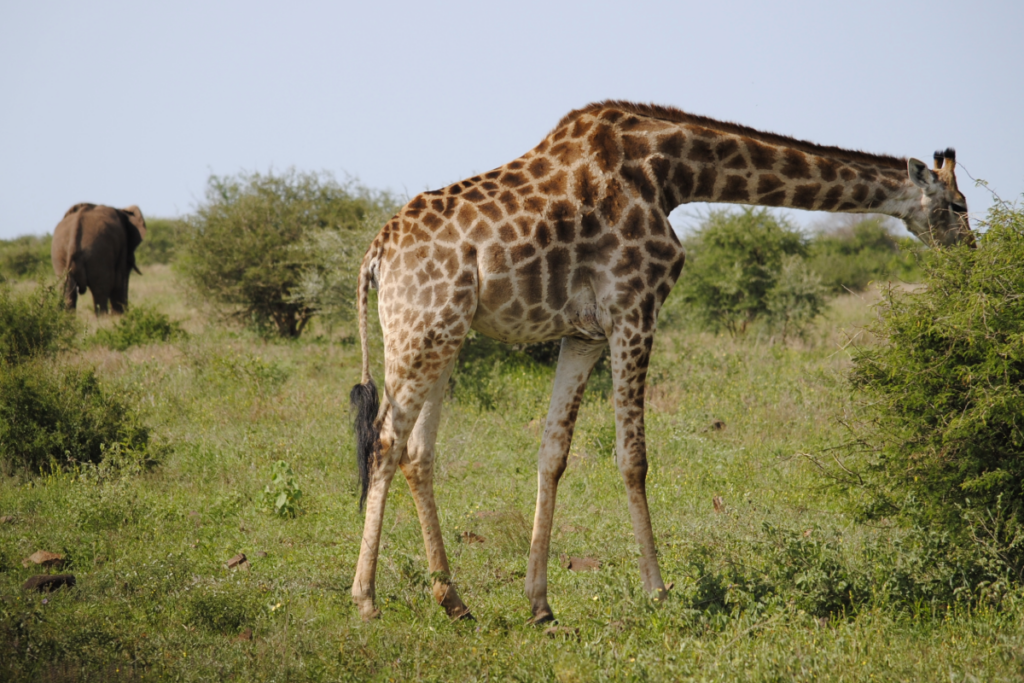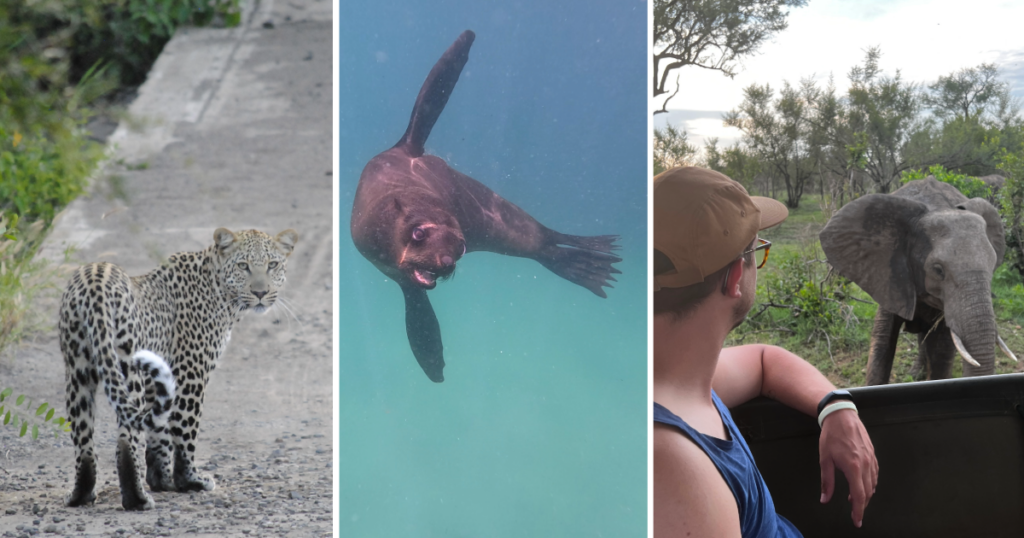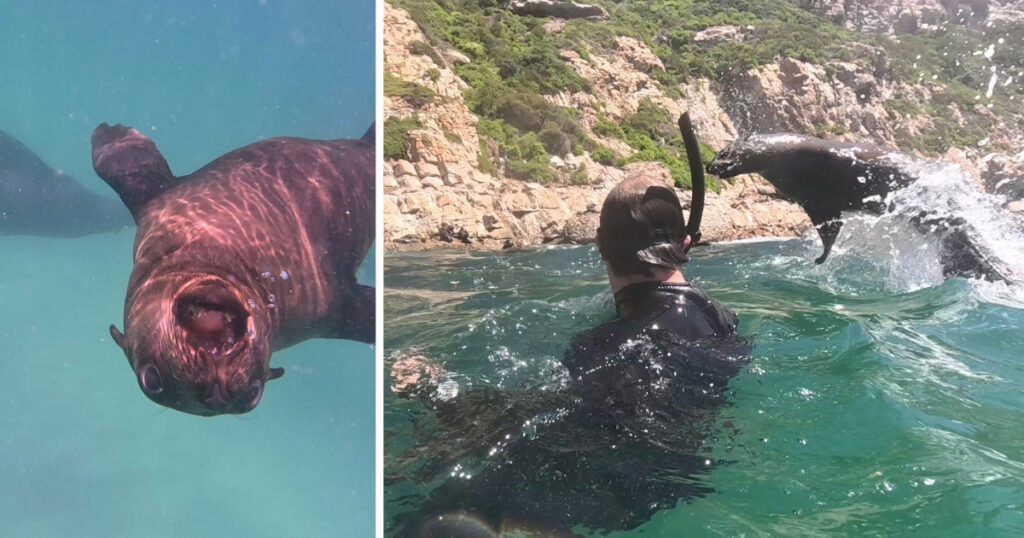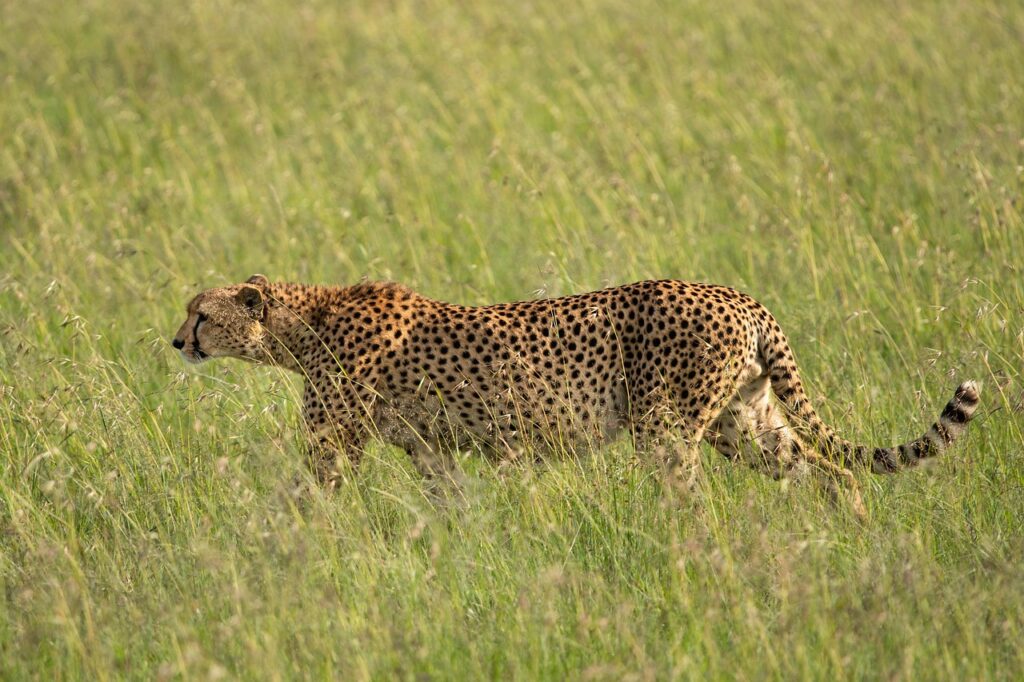South Africa is famous for its unique and abundant wildlife. From the Big 5 in the Kruger National Park — one of the only places in the world you can do a self-drive safari — to swimming with seals, there’s no shortage of incredible wildlife to see. I cover the best South Africa wildlife experiences, list some to avoid, and share tips for safe and ethical viewing.
This post contains affiliate links, which means I get a commission if you book something I’ve linked to here. Thanks for your support!
The best South Africa wildlife experiences
I looooved every single South Africa wildlife-related experience I had in my three months. And there are many more I wasn’t able to squeeze into my visit! Here are all the ones I did, and others I wish I’d had time for.
Explore a safari park
This is the most obviously bucket list-worthy wildlife activity in South Africa, so it had to go at the top of the list.
By going on a safari you’re basically guaranteed to see iconic African wildlife like lions, elephants, rhinos, giraffes, hippos, hyenas, and stunning birds in their natural habitat. There’s the world-renowned Kruger National Park and several private reserves all over the country — each type of safari has its own benefits.
The private parks always involve guided drives with rangers who know exactly where to find elusive creatures. They also usually have pretty luxurious lodges or camps with lots of amenities, but come with a higher price tag.
What’s magical about the Kruger is that it’s way more affordable and you can explore on your own. You can drive around in your own car without a guide and just keep your eyes peeled for movement. The camps are much more basic, but still comfortable, and I’d argue it feels like a more authentic experience. See if you can book the Sable or Shipandani Sleepover Hide in Kruger to sleep in a camouflaged area that allows you to see wildlife up close right outside your window.
Make sure you book one of the walking tours and sunrise, sunset, or night drives to see another side of the park with a guide.
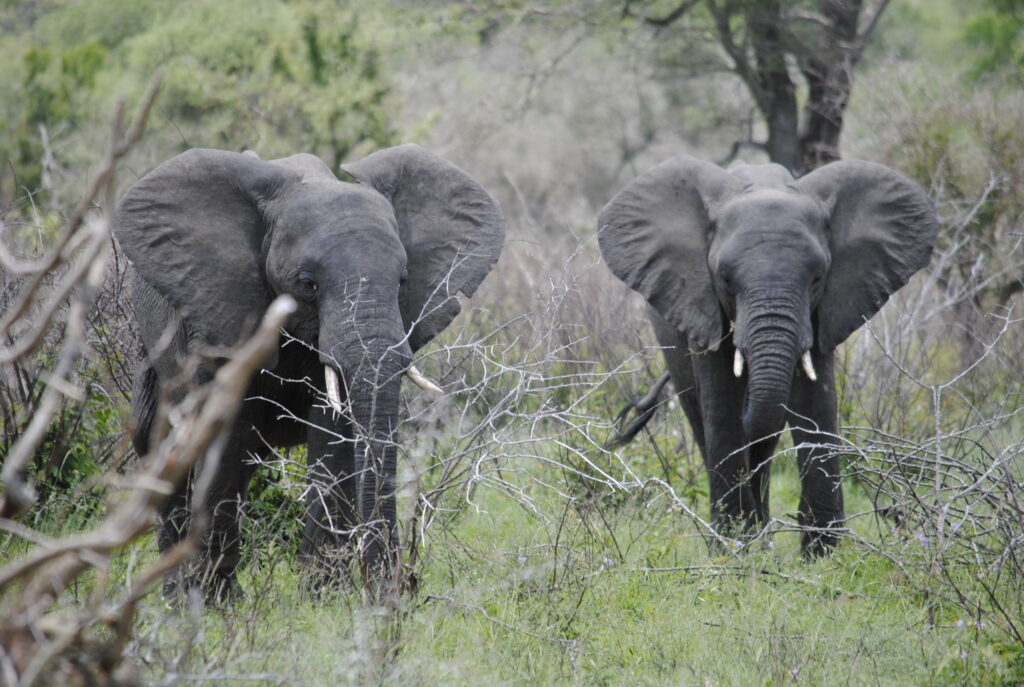
Embark on a walking safari
If you want to get really intrepid and immerse yourself in Africa’s natural environment, you can go on a multi-day walking safari. You’ll be accompanied by a ranger who can tell you all about the areas you’re visiting and the animals you’re seeing. (And protect you if necessary.) One of the coolest parts is that you’ll get to sleep out in the bush! Check out this 4-day walking safari in the Imfolozi Game Reserve.
You can also book a short guided walk from your lodge. We did a sunrise walk in the Kruger National Park and it was amazing. We came face to face with a leopard on foot — it felt kinda crazy but the rangers stayed calm and the leopard looked straight into my soul then wandered off, unbothered.
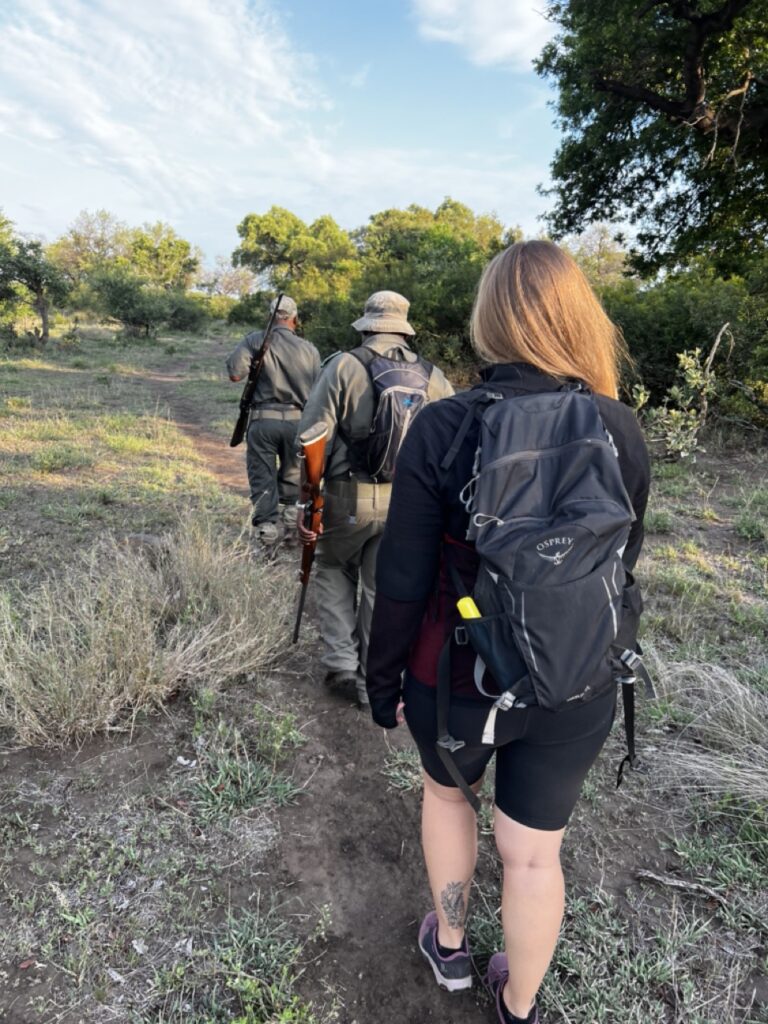
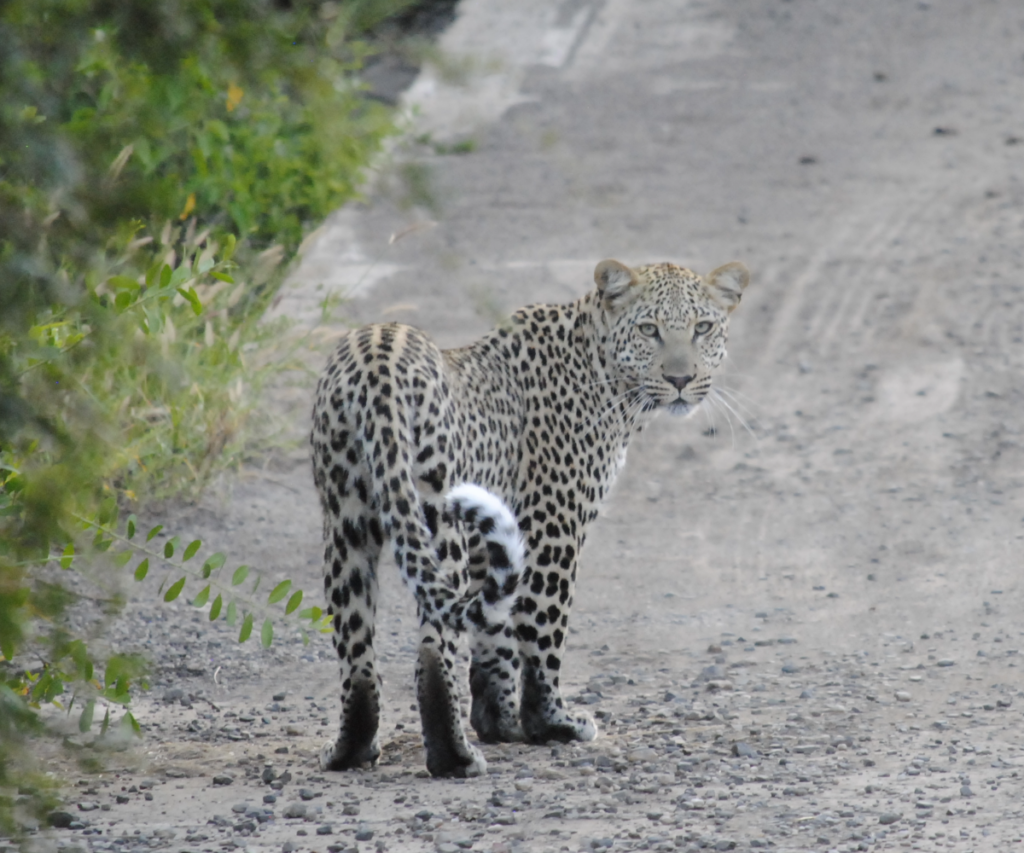
This was one of the craziest moments of my life.
Swim with seals
Swimming with Cape Fur seals in South Africa is an unforgettable experience and one you can’t have in many other places around the world. So make sure you add it to your bucket list.
Give it a whirl in Plettenberg Bay (like I did) or Hout Bay in Cape Town. These little puppies of the sea are super friendly, and twirl and dive around you in their natural habitat — sometimes nibbling at your snorkelling flippers!
See African Penguins at Boulders Beach
Boulders Beach offers a rare chance to see (a lot of) African penguins up close. It’s easy to visit and costs about $10 USD to explore the network of boardwalks where you can observe them without disturbing their habitat. You can even swim on the same beach! Just make sure you let them have their space.
Pet Parrie the stingray
You can pet Parrie the Stingray in Struissbai, a town along the Garden Route. This wild marine dweller worked up the courage to say hello to some people standing on the dock one day. He’s free to roam wherever he likes, but he chooses to hang out by the dock to get pets from friendly visitors.
Unfortunately, when we drove through to say hello, there had just been a big storm and Parrie was nowhere to be seen. The ladies at the local ice cream shop assured me he’s usually hanging around though!
Visit unique rescues at Monkeyland
Monkeyland is a free-roaming primate sanctuary, so you get to wander around the lush green forest trails with a guide while the monkeys run free! It’s home to rescues from around the world (including many not native to South Africa) with species from capuchins and gibbons to howlers and lemurs.
I wasn’t sure what to expect at first, but absolutely loved my experience. This is an absolute must-do on South Africa’s Garden Route, and costs about $20 USD.
Birds of Eden is directly nextdoor and home to many bird species, so you can easily make a whole day out of this South Africa wildlife experience.
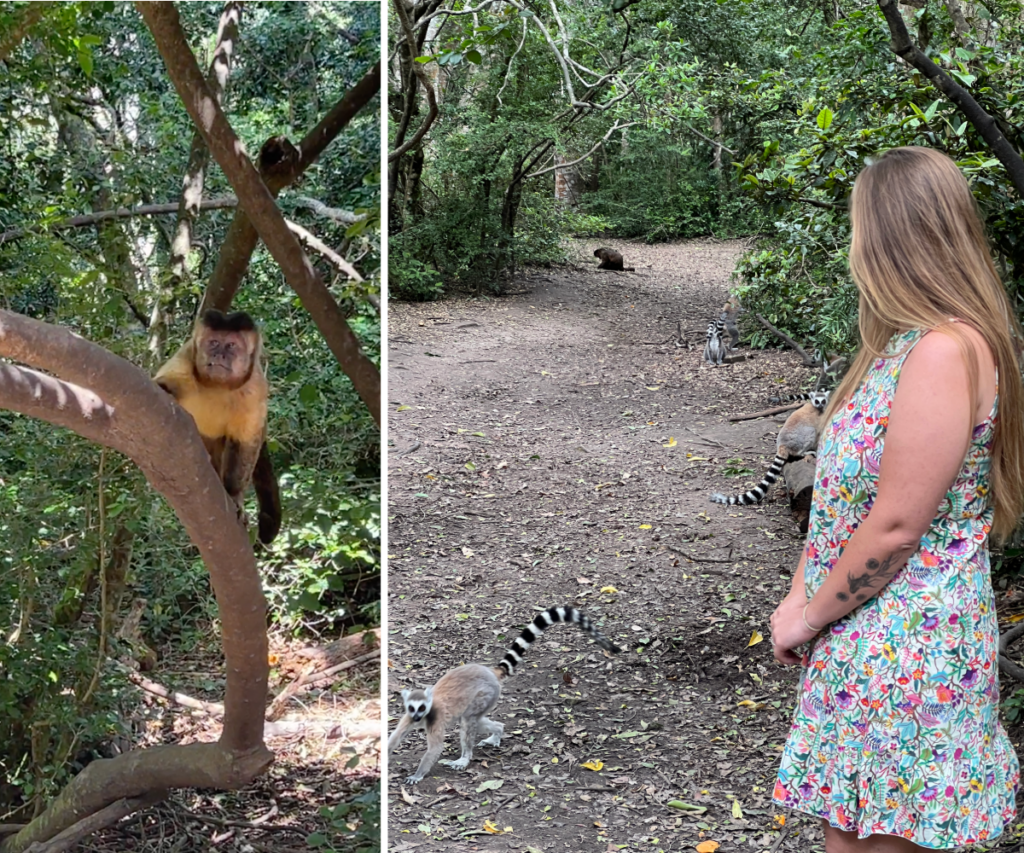
Spend the afternoon at World of Birds
This must-visit spot in Cape Town is also the biggest bird park in all of Africa, but you wouldn’t know it before going inside. With over 3,000 birds, you’ll see everything from colorful parrots and cheeky toucans to massive eagles… and even a few curious monkeys if you didn’t make it to Monkeyland.
It’s a fun spot in Hout Bay, perfect for families and budding ornithologists. Don’t be surprised if a parrot tries to strike up a conversation. It’s also one of the cheapest ways to spend an afternoon in Cape Town, at just $7 USD.
Go whale watching
It’s probably no surprise to you that the nation at the tip of Africa, where three oceans converge, is popular among many species of whales. The best time to see humpbacks, southern right whales, Bryde’s whales, and even orcas is during their migration from June to November — especially if you go to Hermanus.
Considered the whale-watching capital of the world, this town is only about 2 hours from Cape Town and you can spot whales right from the shore! But, for an even closer view, hop on a boat tour. The best places to have this South Africa wildlife experience include Hermanus, Plettenberg Bay, Gansbaai, and False Bay, but there are many more places to check out! Whether from land or sea, spotting these ocean giants is guaranteed to be a highlight of your trip.
Join rangers in tracking elusive cheetahs
This is a super under-the-radar experience that I didn’t even know about until after I left — but it’s on my list for next time! Mountain Zebra National Park is the only place you can tag along with a SANParks ranger to find elusive cheetahs, and even get a bit closer on foot (if you’re lucky).
You’ll be blown away by the cost of such an epic experience: Its’s under $30 USD. The catch? This national park isn’t super easy to get to. It’s about 5 hours from Plettenberg Bay or 9 hours from Cape Town by car. But the extra effort will be well-worth it. I was in the Kurger Park for 5 days and never saw a cheetah, so if you’re like a top fan, you should make this a priority.
Explore one of South Africa's elephant parks
While you’re almost guaranteed to spot elephants in all the national and private game parks around South Africa, there are a few where elephants are in the spotlight. To be clear, they’re not the only large mammals you’ll find during your visit. You still have a good chance of seeing giraffes, hippos, zebras, the occasional lion, and more. But these parks are
- Addo Elephant National Park is along the Garden Route, about 3 hours from Plettenberg Bay. This is home to some gorgeous lodges if you’re looking for a luxury South Africa wildlife experience.
- Knysna Elephant Park is just 20 minutes out of Knysna and therefore very accessible if you’re driving the Garden Route.
- Tembe Elephant Park is in a much lesser-visited area of the country. Far east, just across the border from Eswatini and Mozambique. If you happen to be in the area, it’s a great place to enjoy a safari with few crowds.
Visit a wolf sanctuary
Wolves? In South Africa? Weird, I know. But they were brought here in the ’70s and some dogs were even bred with wolves. So now all the rescues — both wolves and wolf-dog crossbreeds — can live happily ever after at a sanctuary. They’re often abused or abandoned when (surprise!) they aren’t as easy to train as a golden retriever.
A visit helps support these non-profit organizations. Check out:
- Tstsikamma Wolf Sanctuary (Plettenberg Bay)
- Garden Route Wolf Sanctuary (Plettenberg Bay)
- All Hearts Foundation SA Wolf Sanctuary (Hartbeespoort)
- HuskyRomi Sanctuary (Reitz, south of Johannesburg)
Watch leatherback or loggerhead turtles hatch
Another South Africa wildlife experience that requires getting a little off-the-beaten-track, it’s entirely worth the extra effort. Head east along the coastline between St. Lucia and Kosi Bay — known as the Elephant Coast — to see leatherback and loggerhead turtles hatch.
The hatching season runs from November to March, and you’ll be in awe of these massive reptiles. Leatherbacks can weigh a whopping 700 kilos, while loggerheads seem tiny in comparison at 160 kilos.
South Africa wildlife experiences to avoid
While South Africa’s government is pretty amazing in its commitment to protecting wildlife, it’s not perfect, and even some approved tourist experiences are problematic. Here are some (legal and illegal) South Africa wildlife activities to avoid at all costs:
Cage shark diving
If you love an adrenaline rush, you might have cage shark diving as a thrilling adventure on your bucket list. I’m sorry to be the bearer of bad news, but it raises some serious ethical issues.
First of all, operators use dead fish or meat as bait to guarantee they’ll attract great white sharks to give you the experience you’re seeking. But unfortunately, it’s not just a nice bonus snack for the toothy guys. The bait can alter their natural behaviour and even make them associate boats and humans with food.
Then also, constant boat traffic — there are several operators and many host multiple expeditions per day — can stress the sharks out and impact their hunting instincts. This is not a South Africa wildlife experience you need to have.
Cuddling cubs
If a wild animal is calm enough to be of no risk to you, it’s possible it has been drugged or abused to make it that way. While lion and cheetah cubs are cute — heck, even hyena cubs look cuddly — they’ve likely been separated from their mothers if they’re available for tourists to pass around. It may feel like a bucket list dream, but it’s an extremely harmful practice and only exists because there’s demand. So no visitor should seek out this experience. We saw tons of adorable baby animals during our time in the Kruger National Park, so it’s more ethical to set your sights on a respectful encounter at a reasonable distance.
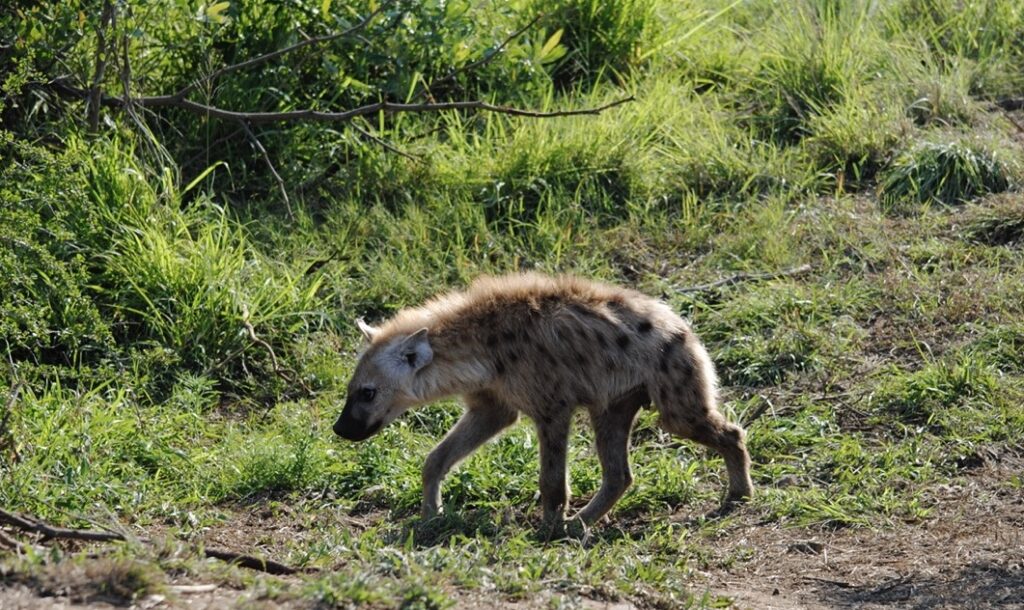
Anything hunting-related
You’d think this goes without saying, but unfortunately there’s still a big international hunting tourism market in South Africa. People come from all over the world for the opportunity to shoot at lions, rhinos, giraffes, elephants, leopards, and more. (Including the Trump family, just in case you needed another reason to hate them.) I will never understand it.
So I feel like this goes without saying: Don’t f*ckin’ do that.
Feeding baboons
It’s a good general rule not to feed the wildlife in any case, but when it comes to these clever and often aggressive wild animals, it’s an especially good idea to keep your distance. I was shocked to learn they’re hugely problematic, roam around cities, and it’s not uncommon for them to make their way into homes and businesses to wreak havoc in search of food.
Sometimes they’ll block the road in groups and come sauntering past stopped cars to see if any generous hands offer up a snack. You’ll notice signs everywhere warning against feeding the baboons, so please listen.
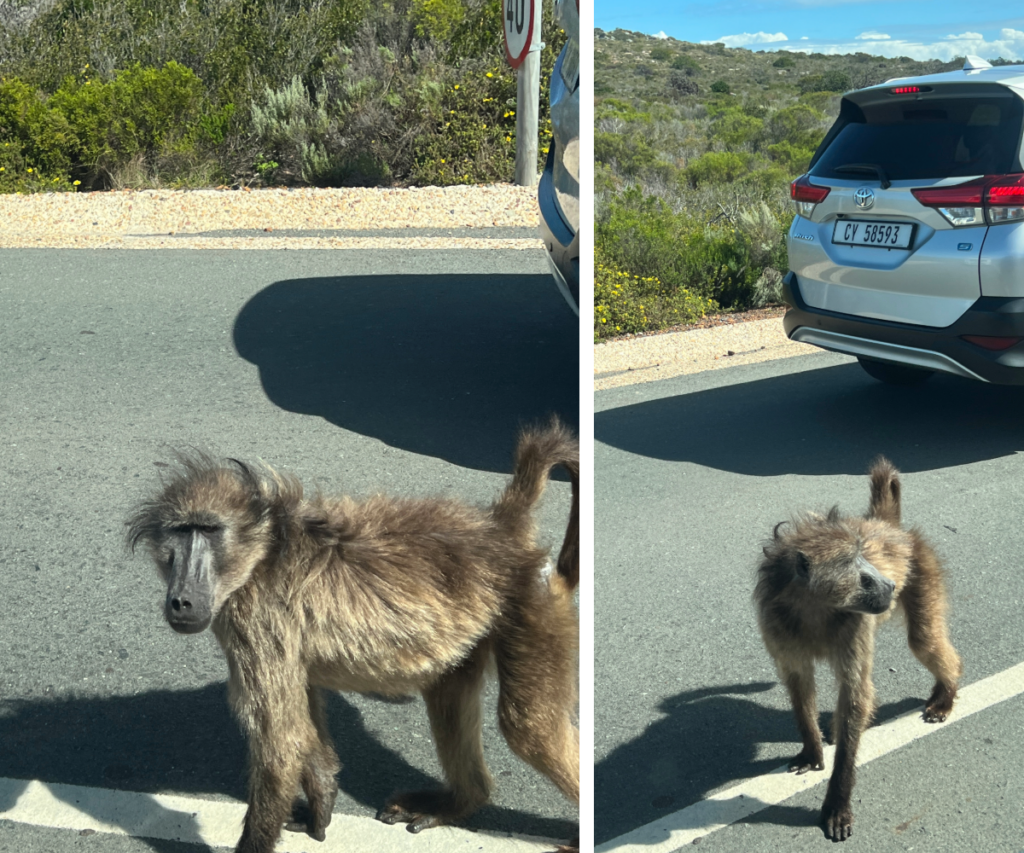
8 tips for safe and ethical South Africa wildlife experiences
To enjoy your South Africa wildlife interactions, always keep these important safety and ethical tips in mind:
- Keep your distance. Never ever attempt to touch wild animals. I’m sorry, but you’re not Snow White.
- Stay calm. Loud noises or sudden movements can startle animals and lead to dangerous situations.
- Never feed the animals. As mentioned previously in the section about cage shark diving, feeding animals disrupts their natural behavior. It can make them sick, aggressive, or dependent on humans.
- Follow park rules closely. The rules are there to keep you safe! Read signs and listen to your guides.
- Lead by example. Just because you see someone else feeding a giraffe doesn’t mean you should join in.
- Don’t use the flash on your camera. Bright flashes can disturb or distress animals, especially nocturnal species. Red lights are usually not an issue, but if you’re in doubt, speak to a guide.
- Choose ethical sanctuaries. Not all “sanctuaries” have the animals’ best interest at heart. Only visit those focused on rehabilitation and conservation, not entertainment.
- Support conservation efforts. Choose lodges and experiences that contribute to wildlife protection. It’s a bonus if they’ve been recognized for their sustainability and ethical practices with awards or in reputable publications.
